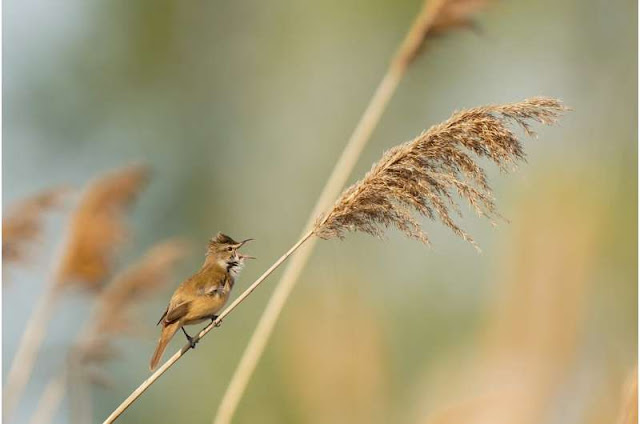Credit: Pixabay/CC0 Public Domain
A team of researchers from Lund University, the University of Copenhagen and the Nature Research Centre in Lithuania has found that some great reed warblers climb as high as 6,000 meters when they fly over the Sahara Desert and the Mediterranean Sea. In their paper published in the journal Science, the group describes monitoring migrating great reed warblers by affixing tiny data loggers to their backs.
Prior research has shown that there are thousands of species of birds that migrate across various parts of the planet to suit their needs. Among those are many songbirds, one of which is the great reed warbler. The bird is very well known in parts of Northern Europe, where it lives in the summer. Great reed warblers have been the subject of multiple research efforts and local birdwatchers await their arrival each spring. But as the temperatures drop in the fall, the birds take flight, migrating to sites approximately 7,000 kilometers away in sub-Saharan Africa. In this new effort, the researchers sought to learn more about two parts of their migratory journey that have not been studied—what happens when they cross the Mediterranean Sea and when and the Sahara Desert?
Prior research had shown that like many other migrators, the birds tend to fly at night and rest during the day. Noting that there would be few places to rest over a vast sea or desert, the researchers wondered how they made it across. To find out, they captured and attached very small sensors to the backs of 63 birds and then set them loose.
In studying their data (from just 14 sensors that had usable data) the researchers found that instead of landing and resting when the sun rose in the sky, the birds not only kept flying, but they climbed higher into the sky. In some instances, the birds were recorded flying as high as 6,000 meters.
The researchers note that the air is much thinner at these altitudes, and much cooler—below freezing. They suggest the birds might be climbing so high because it is the only way they can keep cool during their flight as their muscles generate constant heat. There is also the possibility that they are taking advantage of atmospheric conditions. Researchers on a prior study found that frigatebirds can stay aloft for months due to prevailing winds that allow them to fly with almost no effort.
Recommend this post and follow
The Life of Earth


No comments:
Post a Comment
Stick to the subject, NO religion, or Party politics